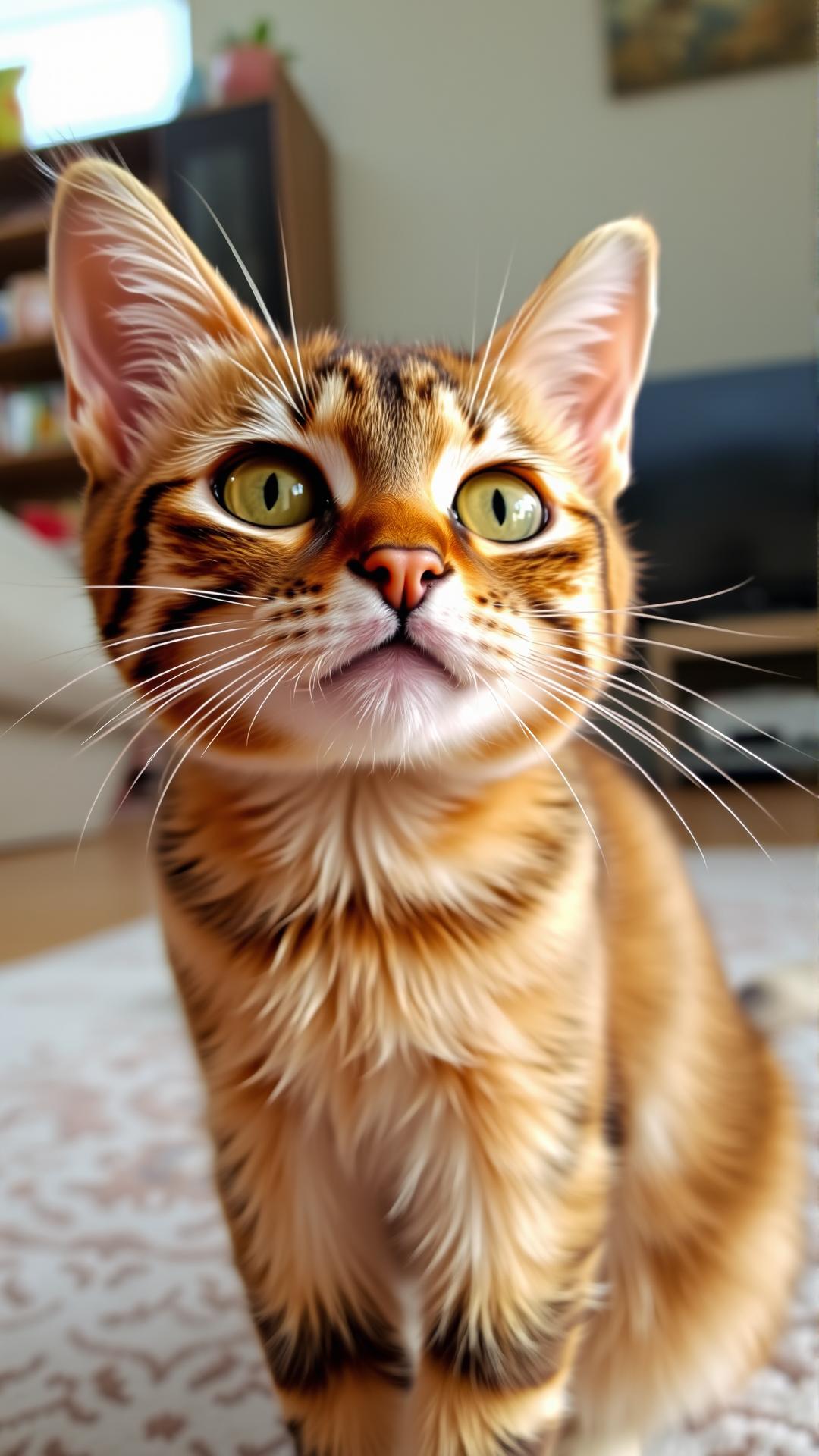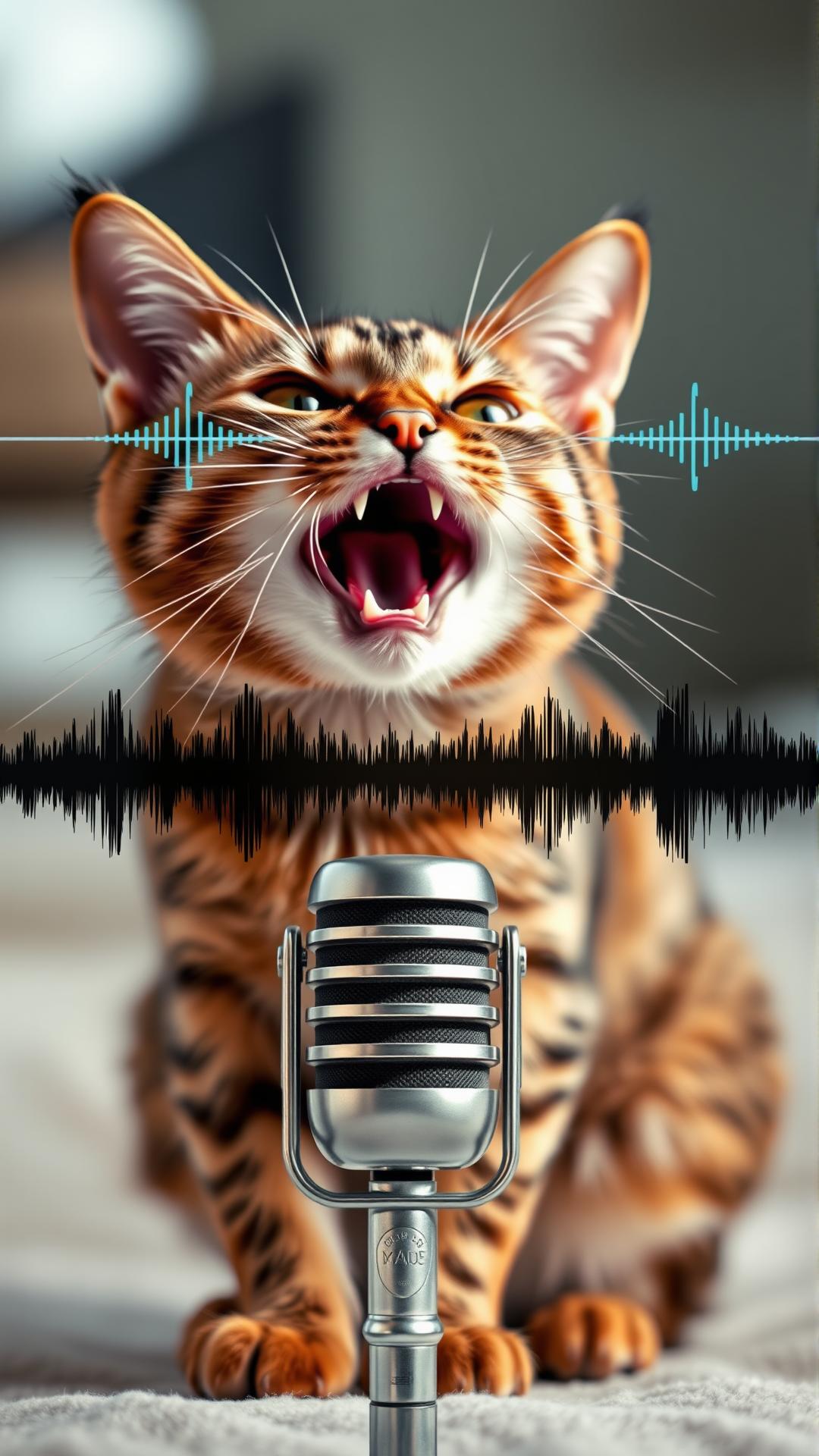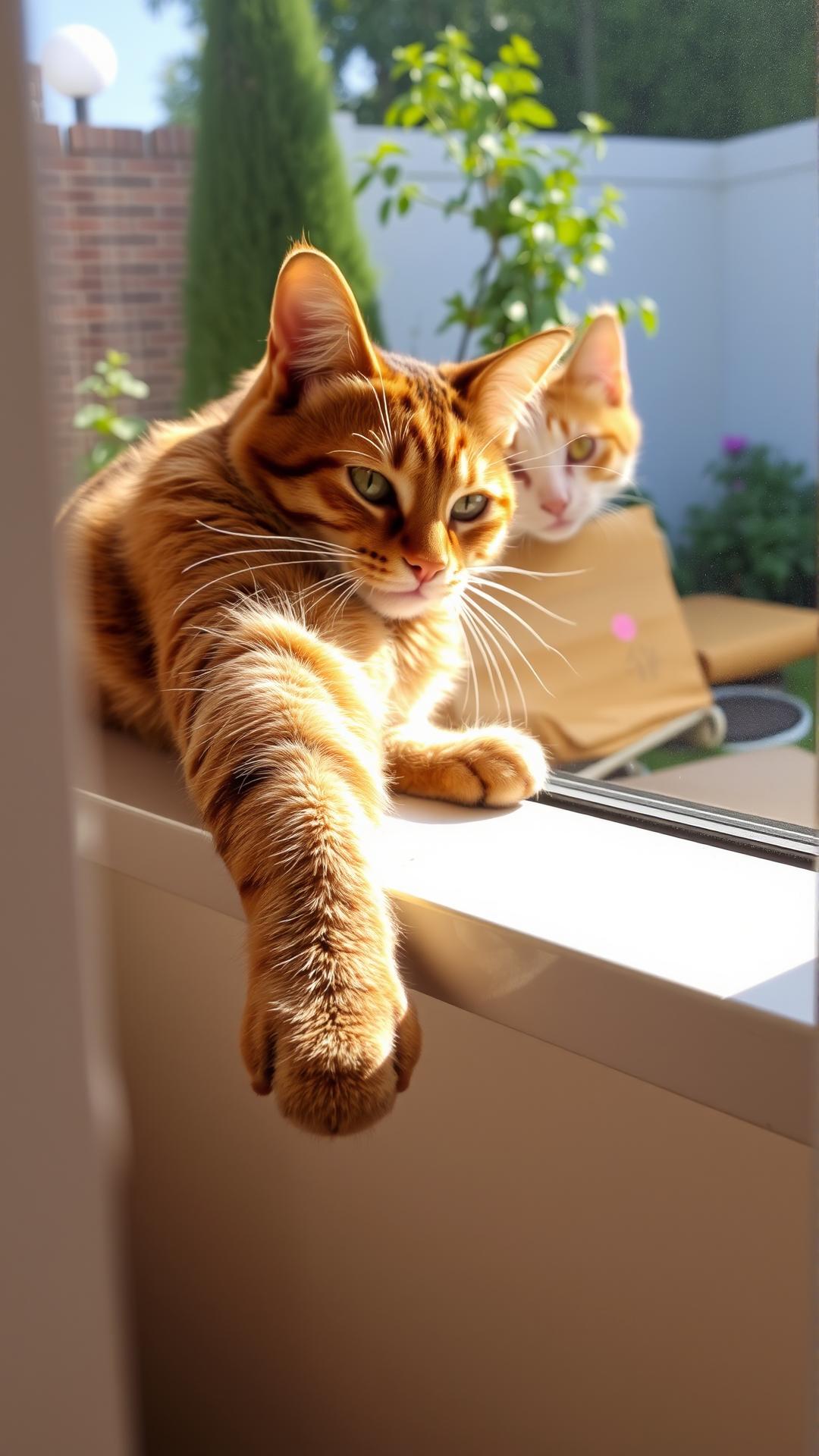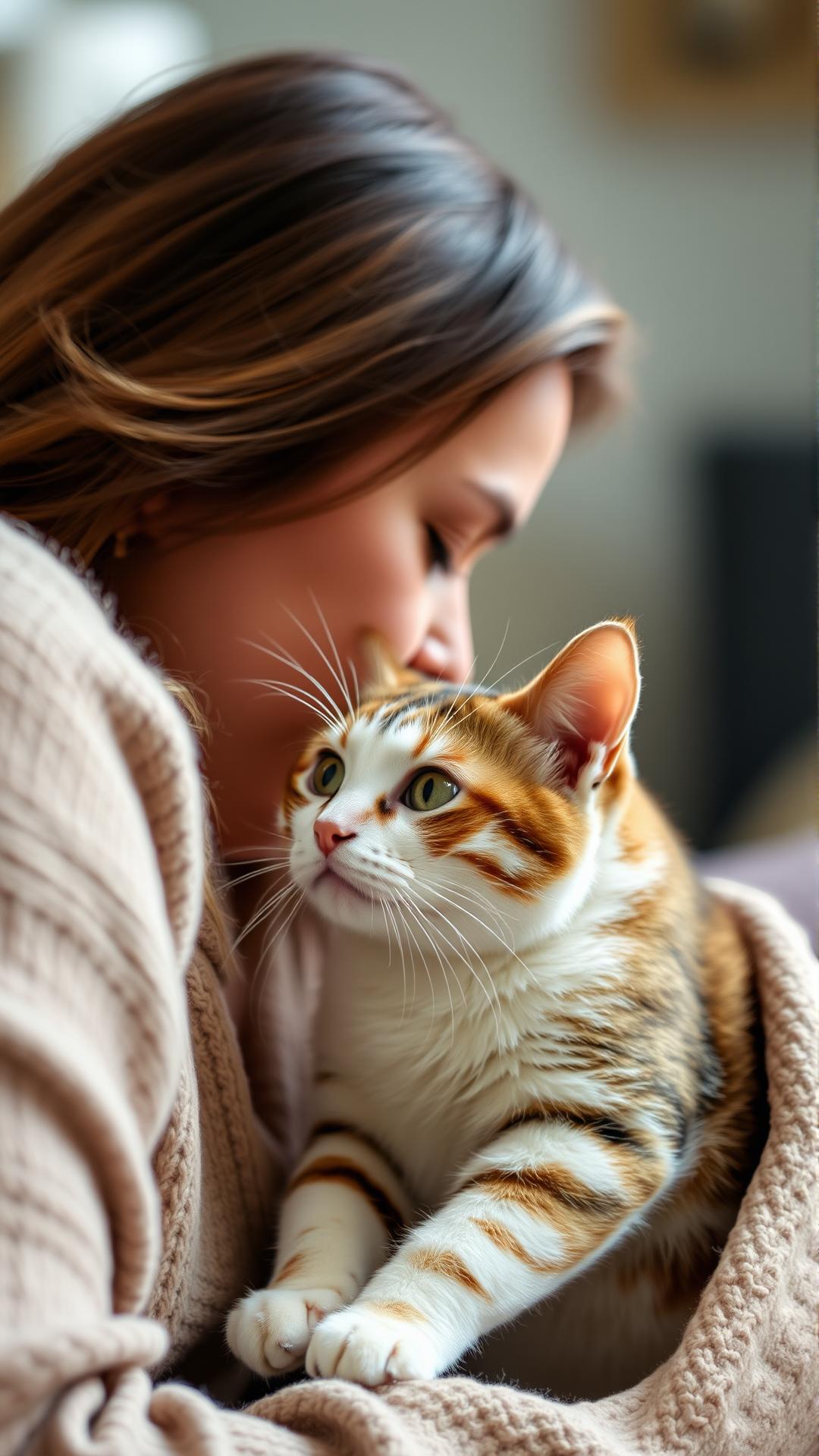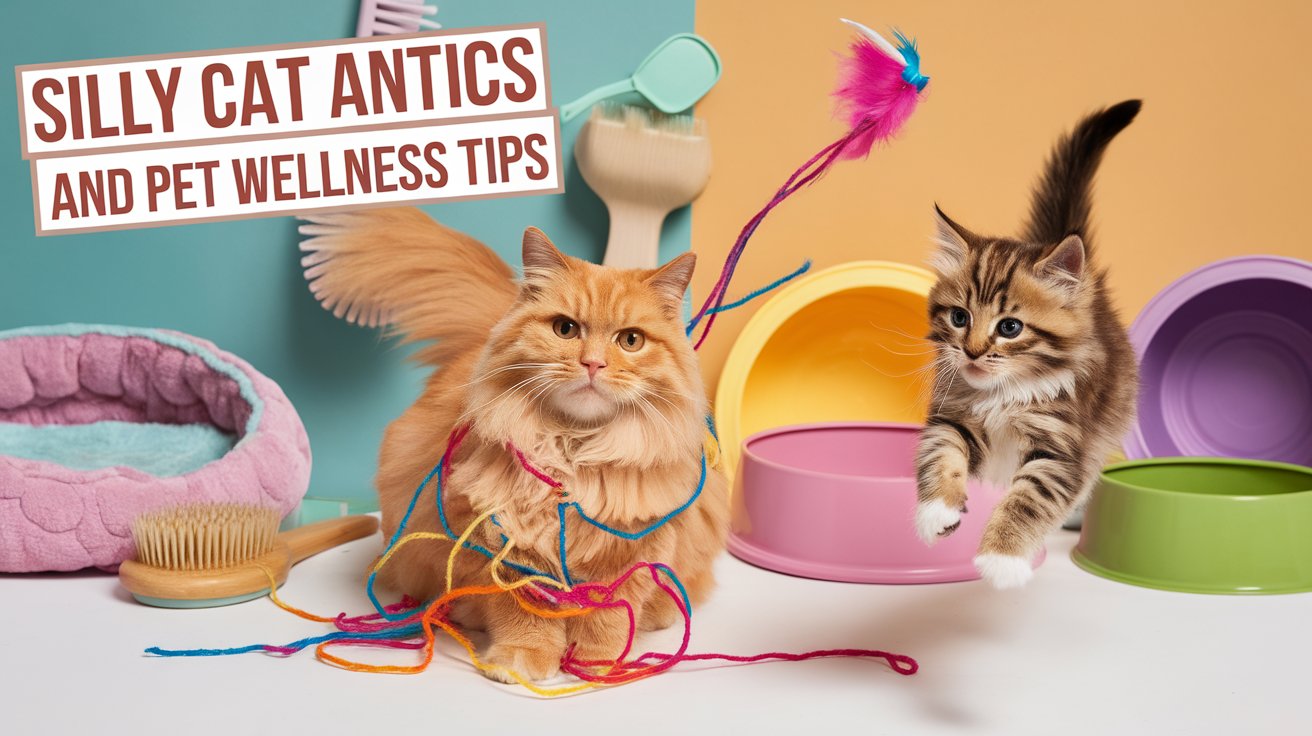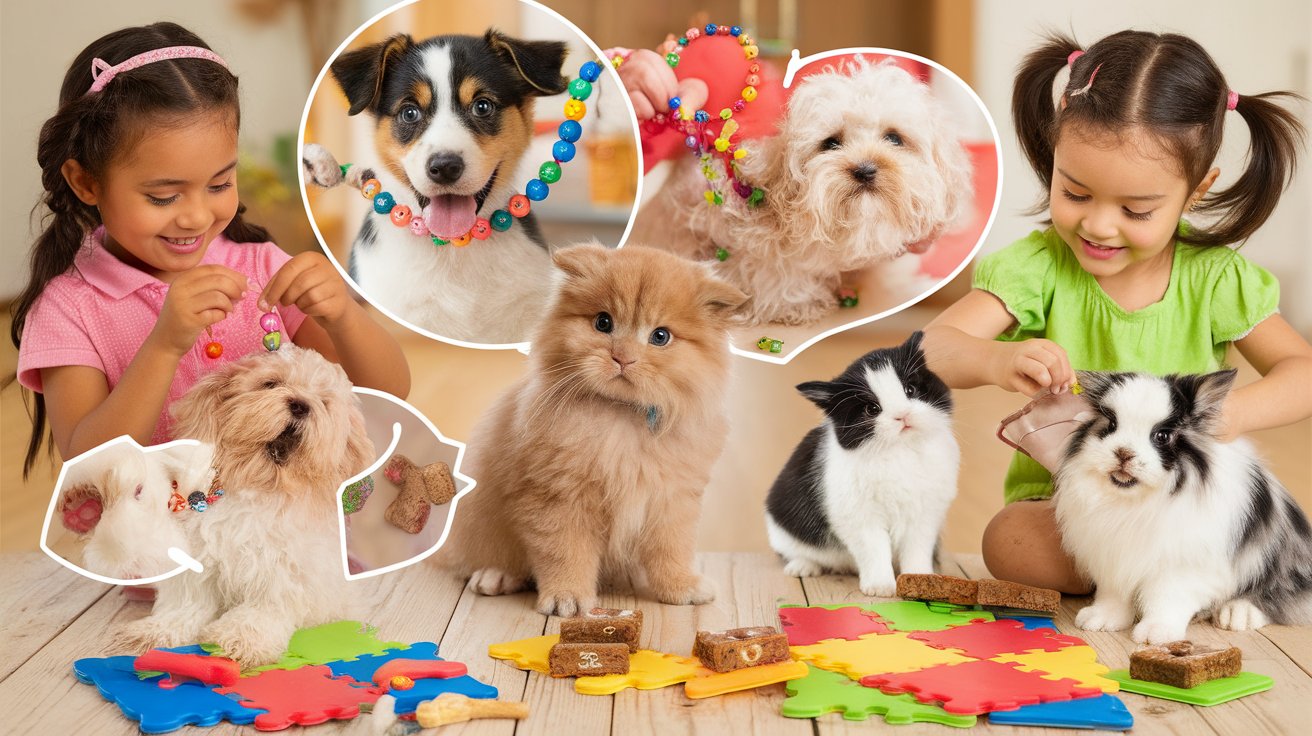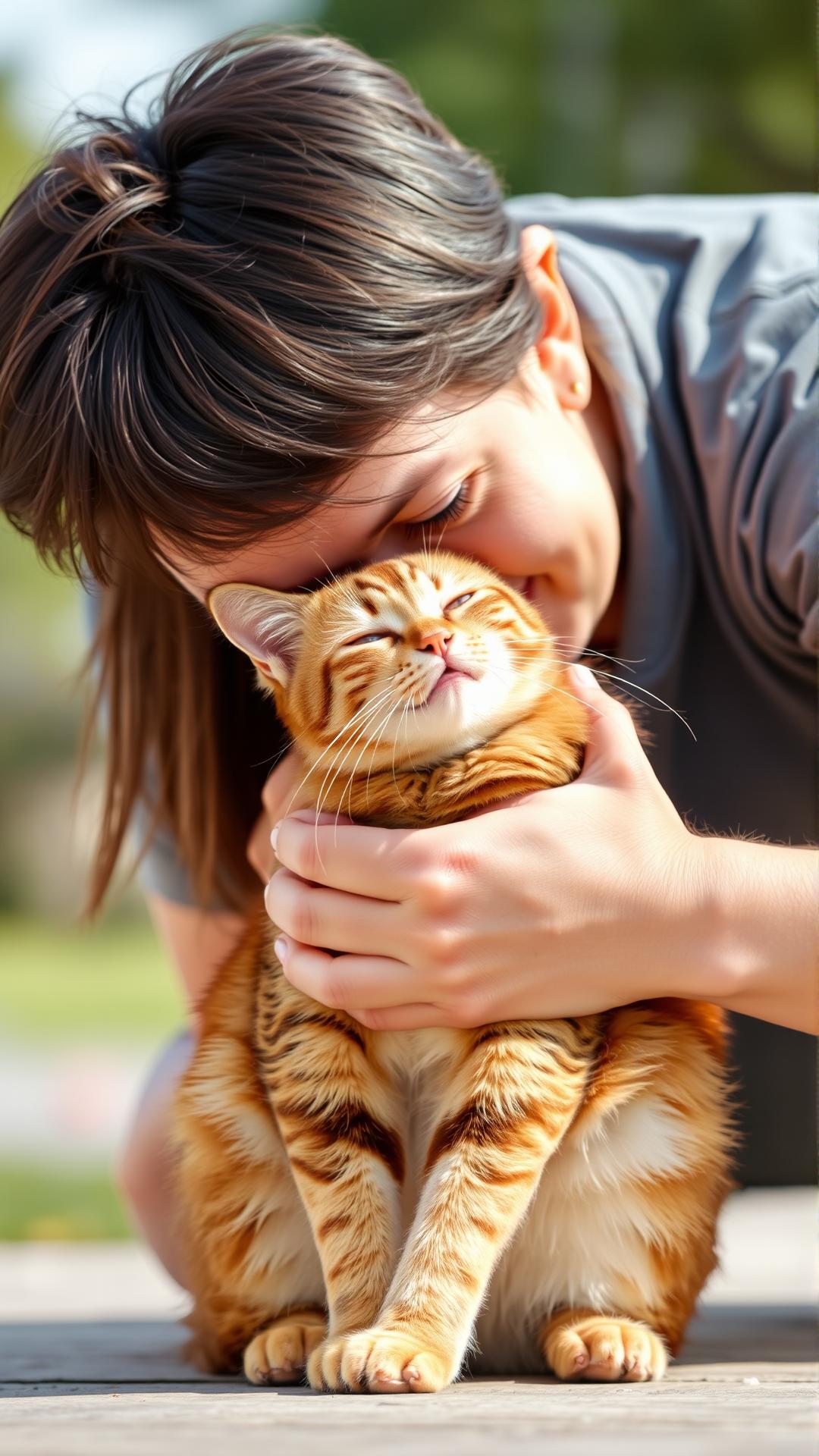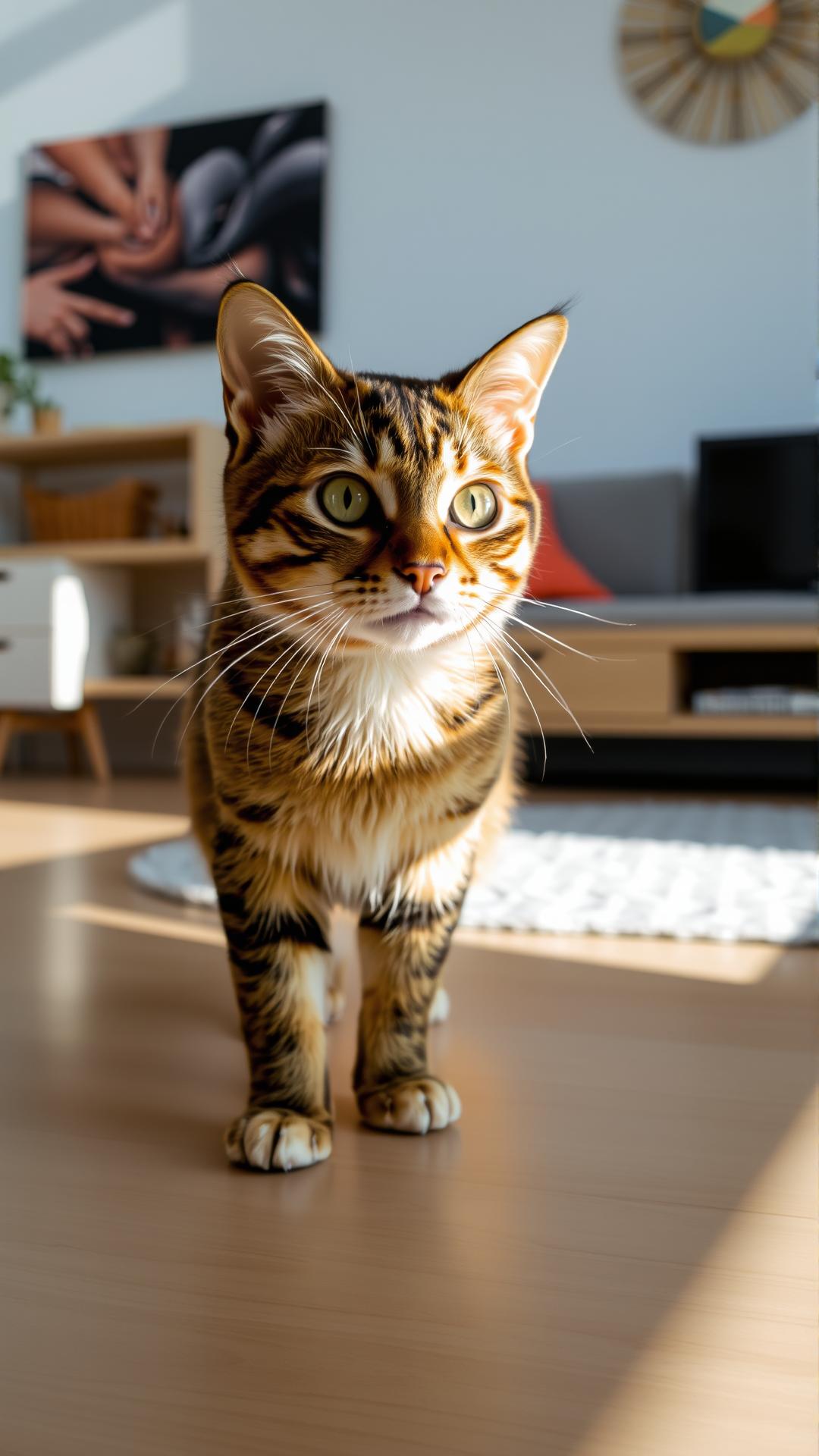Introduction
The intricate world of cat communication is a fascinating study of how these beloved pets express their feelings and needs. Understanding cat language is crucial for any cat owner aiming to strengthen their bond with their feline companion. Cats utilize various communication methods, including vocalizations like meows and purrs, body language, and olfactory signals. Each interaction can convey a range of emotions from happiness to anxiety, making it essential for owners to recognize and respond to these cues appropriately.
In this article, we discuss about the diverse elements of cat communication, exploring how they interact not only with fellow felines but also with humans. By understanding the nuances of cat behavior, including their unique body language and vocal expressions, we empower ourselves to foster a deeper relationship with our pets. Join us on this journey to decode the subtle signs of our furry friends and enrich our daily interactions with them.
The Basics of Cat Communication: Understanding Cat Language in Daily Interactions
Fundamental Aspects of Cat Communication
Cat communication is a multi-faceted system encompassing vocalizations, body language, and olfactory signals. Each element plays a significant role in how cats express their feelings and intentions, allowing them to interact not only with other felines but also with humans. Understanding these various methods enhances our relationship with these enigmatic companions and fosters a deeper connection.
Vocalizations are perhaps the most noticeable aspect of cat communication. Cats produce a range of sounds, including meows, purrs, growls, and hisses, with each having its own context and meaning. For instance, a cat’s meow can vary in pitch and length; a short, high-pitched meow may signal excitement or a greeting, while a low-pitched, prolonged meow could indicate demand or distress. In contrast, purring generally denotes contentment but can also serve as a self-soothing mechanism during times of stress or discomfort.
Body language is another critical component of how cats convey messages. A cat’s posture, tail position, and facial expressions are all indicators of its emotional state. A relaxed cat often exhibits a neutral or upright tail, whereas a puffed-up tail can signify fear or aggression. Understanding these signs can help humans respond appropriately to their feline friends’ needs, whether it involves giving space or offering comfort. Cats are also known for their subtle ear movements, which can indicate whether they are feeling relaxed or alert.
Olfactory signals complete the communication framework. Cats have a highly developed sense of smell, allowing them to convey information through scent marking. They secrete pheromones from their cheeks and paw pads, effectively establishing territory or signaling readiness for mating. When one cat rubs against another or against an object in its environment, it is not merely seeking affection; it is sharing its unique scent, reinforcing social bonds or marking territory.
Understanding cat communication involves paying attention to these varied cues. Each cat is unique, and the nuances of their expressions will depend on individual temperament and experiences. By observing vocalizations, body language, and scents, cat owners can foster a more harmonious environment, ensuring that their feline companions feel understood and secure in their daily lives.
Vocalizations and Their Meanings: An Exploration of Cat Sounds
Types of Cat Vocalizations
Cats communicate through a fascinating array of vocalizations, each serving a specific purpose and context. Understanding these sounds can significantly enhance the bond between cats and their human companions. From soft chirps to loud yowls, each vocalization has its own unique implication. One of the most recognizable sounds is a meow, which serves multiple functions. Adult cats typically use meowing to communicate with humans rather than with other cats. A friendly, short meow can indicate a greeting, while a drawn-out or harsh meow might signal discomfort or a demand for attention.
Purring is another common sound associated with contentment. However, it’s intriguing to note that cats sometimes purr when they are in pain or stressed, as this sound can also serve as a self-soothing mechanism. Kittens will purr when nursing, establishing that early connection with their mother. In contrast, chattering or chirping often occurs when a cat is watching birds or small prey, a sound indicative of excitement or frustration in predatory situations.
Understanding Context-specific Vocalizations
Aside from general categories, certain vocalizations can be context-specific, reflecting the emotional state or intent of the cat. A hiss or growl indicates fear or defensiveness, serving as a warning to potential threats. In situations where a cat feels cornered or threatened, these sounds become a crucial part of their defensive strategy. On the other hand, a trilling sound, akin to a cross between a meow and a purr, often expresses excitement or affection, especially when greeting other cats or humans.
More nuanced is the concept of “silent meows,” where a cat opens its mouth without producing sound, often using this gesture when seeking attention or expressing discontent. Relying on vocalizations is just one dimension of their communication; they frequently blend these sounds with body language, reinforcing their messages through both vocal and physical expressions.
Grasping the meanings behind these vocalizations invites a deeper understanding of a cat’s emotions and desires, fostering more poignant interactions. Paying attention to their sounds within specific contexts can provide insights into their needs, enhancing the quality of the human-cat relationship greatly.
Understanding Cat Body Language: The Significance of Physical Movements and Positions
Understanding a cat’s body language is essential for interpreting their emotions and intentions. Unlike humans, cats do not rely heavily on vocalizations for communication; instead, they convey a significant amount through their physical movements and positions. This chapter explores the nuances of how a cat expresses itself through its body, providing insights into their feelings and behavior.
Key Components of Cat Body Language
The arrangement of a cat’s body can signal a variety of emotions. For instance, a relaxed cat will often be seen lying on its side or back with its limbs sprawled out. This position indicates comfort and trust in its environment. Conversely, a cat that feels threatened may adopt a defensive posture, such as arching its back, puffing up its fur, and swishing its tail. This reaction is a clear signal that the cat is prepared to defend itself.
Another important element is the positioning of the tail. A high-held tail usually signifies confidence and happiness. If the tail is low or tucked between the legs, it often reflects fear or submission. Additionally, when a cat flicks its tail back and forth, it usually indicates agitation or annoyance. it’s crucial to recognize these subtle cues to foster a healthy relationship with your feline companion.
The Role of Eye Contact
Eye contact also plays a vital role in cat communication. A slow blink from a cat can be interpreted as a sign of affection or trust. In contrast, a direct, unwavering stare may be perceived as a threat or challenge. Understanding the context of the gaze is important; for example, if a cat looks away or squints, it indicates they are feeling safe and content.
A cat’s ears and whiskers provide additional context to their emotional state. Ears that are erect show curiosity or alertness, whereas pinned-back ears indicate fear or aggression. Whiskers that are forward signal interest and exploration, while whiskers pulled back often represent unease or defensiveness.
By attentively observing these physical movements and positions, cat guardians can decode their pets’ unique language, enriching their interactions and ensuring a more harmonious coexistence. As we transition to the next chapter, the focus will shift to the role of scent in cat communication, another fascinating aspect of feline behavior.
The Role of Scent in Cat Communication
Scent Communication in the Feline World
Cats have a sophisticated means of communication that goes beyond mere vocalizations or body language. One of the most significant yet often overlooked aspects of feline communication is scent. Cats use their keen sense of smell, which is far more developed than that of humans, as a primary way to convey information about territory, identity, and social relationships. When discussing cat communication, it is essential to understand the role of scent and how it interplays with their daily interactions.
One of the primary methods cats use to communicate through scent is by marking their territory. They have scent glands located on various parts of their bodies, including their cheeks, paws, and the base of their tail. By rubbing these areas against objects in their environment, cats deposit pheromones—chemical compounds that convey specific messages. This behavior serves as a way to announce their presence to other cats and establish control over a given area.
Scent plays a crucial role in social bonding and recognition among cats. When two cats greet each other, they often engage in a behavior known as ‘bunting’—rubbing their heads and bodies together. This exchange not only allows them to mark each other with their unique scent but also shares vital information about their emotional states and health. A cat can discern whether another cat is a friend or a foe simply by interpreting its scent.
The Chemistry of Cat Scent Marking
The chemistry of these scents is fascinating, as different pheromones can signal various emotions—such as fear, aggression, or contentment. For instance, a cat may release pheromones that indicate stress or territory invasion, prompting a defensive reaction from neighboring felines. Conversely, calming pheromones can create a sense of safety and well-being, often utilized in multi-cat households to ease tension.
Scent communication is not only confined to interactions with other cats. Cats also use their sense of smell to communicate with humans, often expressing their needs and feelings through this powerful sense. A cat may rub against a human, leaving behind its scent as a means of marking them as part of its territory, reinforcing social bonds, and seeking attention.
Understanding how cats utilize scent for communication enriches our grasp of their complex behavioral patterns. As we proceed to explore how cats communicate with humans, it is essential to recognize scent as a foundational element that influences not only feline interactions with each other but also their unique relationship with us.
How Cats Communicate with Humans: A Unique Adaptation of Cat Language
Understanding Cat Communication Styles with Humans
Cats possess a sophisticated language that is deeply rooted in their instincts, yet they adapt their communication methods when interacting with humans. Unlike their interactions with other felines, where body language, scent, and vocalizations are predominant, cats tailor their behavior to engage with their human companions effectively. This adaptation is driven by their desire for connection and the need to navigate a world dominated by humans.
Vocalizations are a primary example of how cats adjust their communication style. While they use meows to communicate with other cats during specific contexts—such as asserting dominance or inviting play—they often reserve their vocal cues exclusively for humans. Interestingly, these meows have become more varied and personalized, with many cat owners recognizing specific sounds associated with their pet’s needs. For instance, a higher-pitched meow can indicate excitement or a request for attention, while a low rumble might express annoyance or discontent.
Body language is another vital element that illustrates how cats modify their communication style. When interacting with humans, cats often rely on a range of subtle movements and postures to convey their feelings. A relaxed tail, slow blinks, and a gentle rub against a human’s hand are all signs of affection. In contrast, a puffed tail or flattened ears signals discomfort or fear. Understanding these nuances allows humans to decipher a cat’s emotional state, fostering better communication and companionship.
Cats are adept at recognizing the specific social cues exhibited by their human counterparts. They observe human behaviors closely, adjusting their actions to elicit desired responses. For example, a cat might approach a person with a soft gaze and a gentle purr when they are hungry, leveraging their cuteness and affection to evoke a favorable reaction. This strategic behavior showcases the complexity of the cat-human relationship and underscores the chemistry involved in their interactions.
The way cats communicate with humans reveals their intelligence and capacity for adaptation. By deciphering their vocalizations, observing their body language, and acknowledging their behaviors, owners can deepen their understanding of their feline friends. This understanding not only enriches the bond between cat and owner but also enhances daily interactions, paving the way for a harmonious coexistence.
The Shift in Priorities When Speaking to Humans
As a species that evolved in the wild, cats have a competent way of communicating with one another, relying heavily on subtle cues and signals, particularly when it comes to hunting and social hierarchy. However, the introduction of human companionship has prompted a shift in their communicative priorities. They have borrowed elements from human social interactions, infusing their natural instincts with learned behaviors that not only express their needs but also forge emotional connections.
For example, alongside standard meows, you may notice your cat employing a variety of sounds such as chirps, trills, or even what appears to be a feline “conversation.” These adaptations are part of a broader strategy to engage with humans effectively, drawing upon the understanding that varied sounds can capture attention and provoke a reaction. Such creativity in vocalization highlights their ability to modify their language based on whom they are communicating with, making daily interactions richer and more meaningful.
Recognizing this shift allows human caregivers to foster a deeper engagement with their pets. As cats demonstrate an ability to modify their communication styles, owners can respond in kind, tailoring their own approaches to suit their cats’ unique ways of expressing themselves. This mutual understanding lays the foundation for a more profound relationship based on trust, companionship, and the joy of shared experiences.
Creating a Stronger Bond Through Understanding: Enhancing Communication with Your Cat
Understanding the Chemistry of Communication
The relationship between cats and their owners can be significantly enriched through a deeper understanding of cat language and behavior. Establishing a strong bond requires recognizing and responding to the subtle cues your feline friend provides. The chemistry of communication between cats and humans is unique, and by enhancing this dialogue, both parties can enjoy a more fulfilling companionship.
The first step towards improving communication is to pay close attention to your cat’s body language. Cats express themselves through a variety of postures and movements. For instance, a cat that arches its back and raises its tail is signaling confidence and contentment, while a cat with flattened ears or a twitching tail may be feeling threatened or annoyed. Observing these physical expressions can help you understand your cat’s emotional state, allowing for appropriate responses that foster trust and security.
Vocalizations are another important aspect of cat language that should not be overlooked. Each meow, purr, hiss, or chirp can convey different messages depending on the context. For example, a persistent meow may indicate that your cat is seeking attention or food, while a soft purr often signifies relaxation and happiness. Engaging in playful conversation with your cat, using varying tones and pitches, can enhance your bond and encourage them to communicate back. This interactive dialogue can be a delightful experience for both of you.
Practical Tips to Encourage Communication
- Respect personal space: Understand that cats are territorial and may need time alone. Allot them areas where they can retreat when feeling overwhelmed.
- Create a routine: Consistency in feeding, play, and affection can help your cat feel secure, paving the way for better communication.
- Engage in play: Interactive toys and activities promote bonding and provide opportunities for your cat to express its playful nature, which can strengthen your relationship.
- Use positive reinforcement: Reward your cat with treats or affection when they communicate in ways you find desirable, encouraging them to continue this behavior.
- Be patient: Building a bond takes time. Allow your cat to set the pace of your interactions and be attentive to their needs.
By focusing on these practical tips, you can foster an environment that encourages open communication. This not only enhances your relationship but also promotes a deeper understanding of your cat’s unique personality. The more you connect through language and behavior, the stronger your bond will become, ultimately enriching both your lives.
The Importance of Observation: Understanding Cat Language Through their Unique Communication Styles
Observing cats in varied situations is an invaluable practice for anyone wanting to deepen their understanding of feline communication. Each cat possesses a distinct personality that shapes its interaction style, making careful observation a key component in deciphering their specific needs and feelings. By paying close attention to their behavior, body language, and vocalizations, cat owners can develop a nuanced understanding of what their pets are trying to convey.
Reading Body Language
Cats communicate a great deal through body language. A cat’s posture, tail position, and ear orientation are all indicators of its emotional state. For instance, a cat that approaches with a low body posture and a quivering tail is typically indicating submission or fear. In contrast, a cat that stands tall with an upright tail is likely expressing confidence or excitement. Understanding these signals is essential for interpreting how your cat feels in different contexts.
A cat’s ears offer crucial insights into its mood. Ears that are pointed forward can signify curiosity, while those pinned back may indicate agitation. Observing these subtle cues will help foster a deeper bond, as you become adept at responding to your cat’s emotional signals in a timely manner.
Vocalizations and Individual Preferences
Each cat also has its own vocalizations that can greatly differ from those of others. Meows, purrs, hisses, and growls can all represent various states of being or desires. For example, persistent meowing may signal a request for attention, whereas a slow, rhythmic purr usually indicates contentment. Observing the circumstances surrounding these noises helps clarify their meanings, especially since cats often develop unique “vocabularies” based on their environment and experiences.
Noticing how your cat interacts with other pets or humans can shed light on its social preferences. Some cats enjoy solitary play, while others thrive in interactive settings. By carefully watching your cat’s reactions to different stimuli—be it a new toy, noise, or guest—you can better cater to its social needs, enhancing its overall well-being.
The art of observing your cat is not simply an academic exercise; it is an essential element of daily interactions that leads to a richer understanding of their unique language. Embracing this practice will empower you to form a more profound connection with your feline companion, enhancing the quality of life for both you and your cherished pet.
Conclusions
Comprehending the unique language of cats unveils the underlying dynamics of their behavior. From their vocalizations to their body language, each form of communication serves a specific purpose. Recognizing these signals allows pet owners to respond more effectively, fostering a more harmonious relationship with their cat. As we’ve explored, cats communicate for many reasons, whether to express affection, alert to danger, or ask for attention.
Learning about cat communication is not just about interpreting sounds or gestures; it’s about understanding the emotional landscape of our pets. By nurturing this knowledge, we can create a nurturing environment that meets their needs and enhances our shared experiences. Our ability to engage with our cats on this deeper level not only elevates their quality of life but also enriches our companionship.




